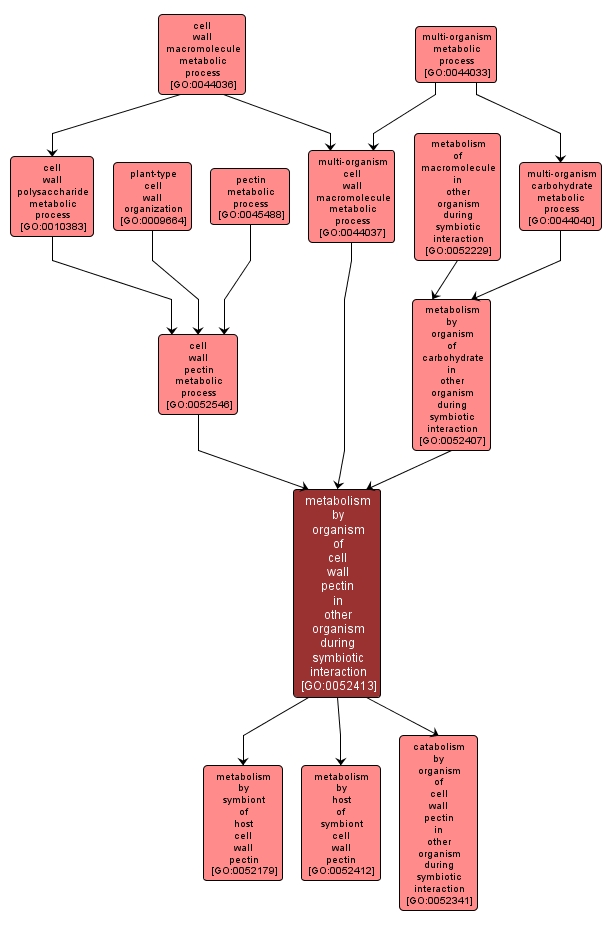GO TERM SUMMARY
|
| Name: |
metabolism by organism of cell wall pectin in other organism during symbiotic interaction |
| Acc: |
GO:0052413 |
| Aspect: |
Biological Process |
| Desc: |
The chemical reactions and pathways performed by an organism involving pectin in the cell wall of a second organism, where the two organisms are in a symbiotic interaction. |
|

|
INTERACTIVE GO GRAPH
|














